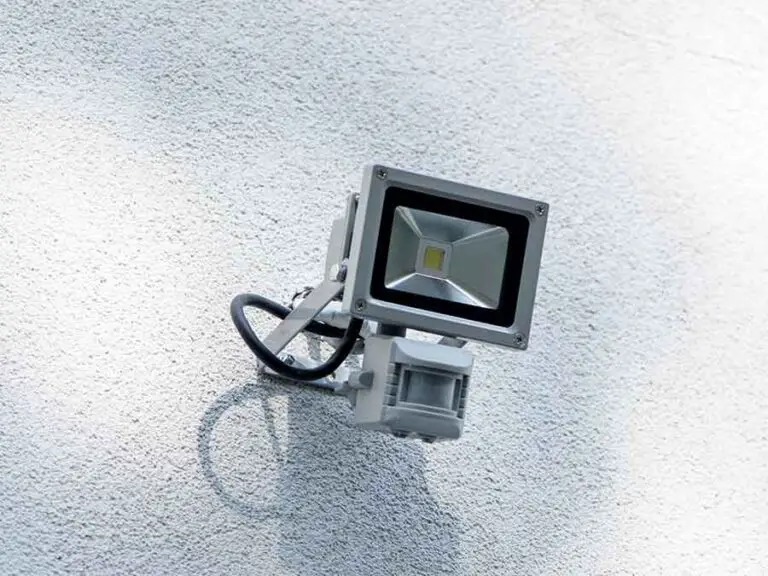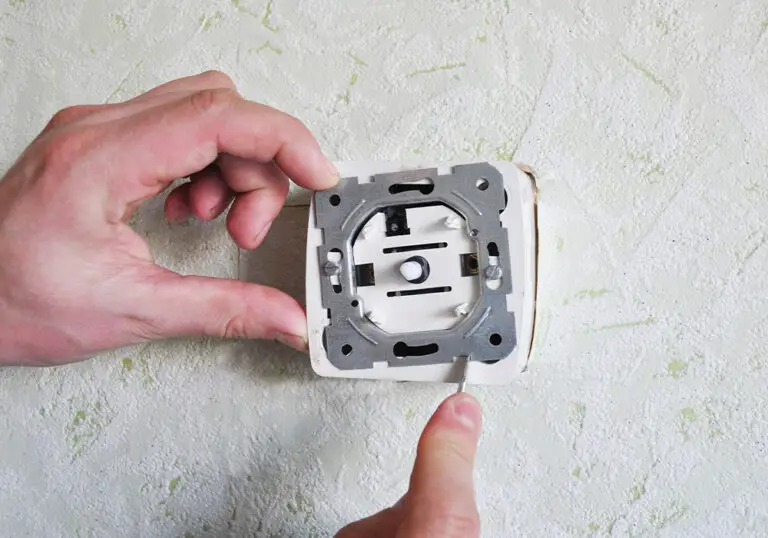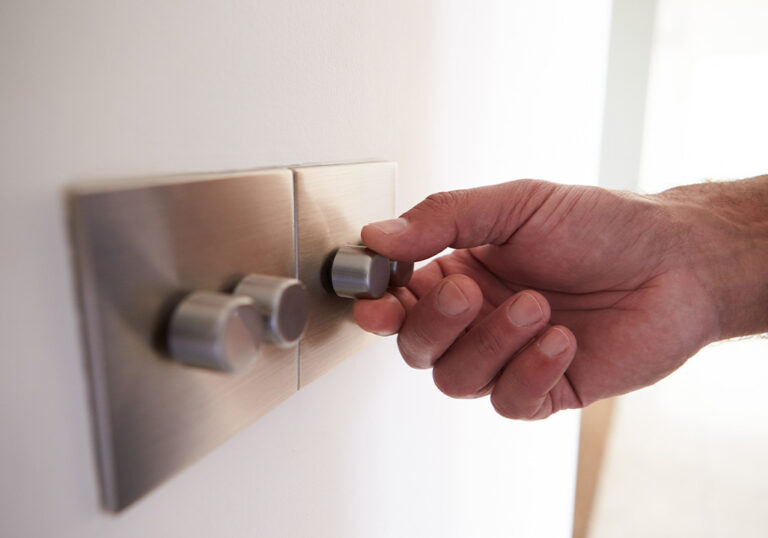How Many Watts Can A 14 Gauge Extension Cord Handle?
Understanding the wattage handling capacity of extension cords is essential for both safety and efficiency. One common size you may encounter is the 14 gauge extension cord. These cords are versatile and widely used in various settings, but they come with specific limitations to ensure reliability and prevent electrical accidents.
The wattage capacity of a 14 gauge extension cord can vary depending on length and other factors. In general, it can handle around 1,440 watts for shorter lengths, while longer lengths may deliver fewer watts. It is important to be aware of these variations and consider them when planning your electrical projects or powering your devices and appliances.
Key Takeaways
- 14 gauge extension cords are versatile and common, with wattage capacity depending on length
- Generally, these cords can handle around 1,440 watts for shorter lengths
- Always consider wattage limits and take safety precautions when using extension cords
Understanding Electric Power
When dealing with electrical appliances and extension cords, it’s crucial to understand the concept of electric power. This fundamental knowledge can help you make safe and efficient decisions in your day-to-day life.
Electric power is measured in watts (W) and refers to the rate at which energy is consumed or produced by a device. To calculate the wattage, you can multiply voltage (V) by current (amps or A), using the formula: W = V × A. In most domestic settings, the voltage is constant at 240V (in the UK).
When selecting an extension cord, it’s essential to consider the power requirements of the devices you intend to connect. Each device demands a certain amount of watts to operate efficiently without overloading the extension cord. This is where the wire gauge comes in, determining the capacity of the extension cord to handle electric power.
A 14 gauge extension cord is typically rated for up to 15 amps or 1,440 watts. However, this capacity assumes that the cord is in good condition and used in normal operating conditions. It’s important to remember that other factors, such as the length of the extension cord, can affect its maximum power handling capacity. A shorter 14 gauge wire can handle up to 1,650 watts and 15 amps, while a longer one, 150 feet in length, can handle up to 770 watts and 7 amps.
When using an extension cord, ensure that the combined wattage of the connected devices does not exceed the maximum capacity of the cord. Additionally, keep in mind that higher ambient temperatures may decrease the cord’s ability to handle electrical loads, so it’s best to use extension cords within specified operating temperature ranges.
In summary, understanding electric power and its relationship with extension cord gauge is essential for using these cords safely and efficiently. Always pay close attention to the power ratings of both the cord and the devices you want to connect, ensuring that you don’t exceed the cord’s maximum capacity.
How Electrical Current Works
As you delve into the world of extension cords, it’s essential to understand how electrical current works. Electricity is the flow of electrons through a conductor, typically in the form of a wire. This flow of electrons creates a current, which is measured in amperes (amps). The voltage is the force driving the current through the conductors, and it is measured in volts (V). Furthermore, the power generated by an electrical device or transferred through a conductor is measured in watts (W), which is the product of the voltage and the current.
When you use an extension cord, you allow electrical current to flow from the power source to the device you’re operating. The extension cord acts as a conduit for the current, facilitating the transfer of electrical energy. These currents can vary in strength, depending on the wattage and the gauge of the cord.
The gauge of a wire refers to its thickness or diameter. A higher gauge number implies a thinner wire, which can carry less current. In contrast, a lower gauge number corresponds to a thicker wire that can handle a more substantial current. The gauge of an extension cord is crucial for ensuring safe and efficient operation of your electrical devices, as it determines how much current the cord can handle without overheating or causing risks.
A 14 gauge extension cord, for example, can handle different wattages depending on its length. According to one source, a shorter cord (less than 50 feet) can handle a current of up to 15 amps or roughly 1,875 watts (W = V x A, where V = 125 volts and A = 15 amps). If the cord is longer than 50 feet, the capacity lowers to around 1,440 watts. Always make sure to use an extension cord with a suitable gauge and length for your particular electrical devices to avoid damaging them or causing any safety hazards.
The Role of Gauge in Handling Power
When it comes to understanding how many watts a 14 gauge extension cord can handle, the gauge of the wire plays a crucial role. Wire gauge refers to the thickness and diameter of the wire, and it can determine the amount of power that can safely be transmitted through the extension cord.
A lower gauge number indicates a thicker wire, while a higher gauge number represents a thinner wire. Thicker wires generally have a higher current-carrying capacity and can support a higher wattage load, reducing the risk of overheating and potential damage to your connected devices.
In the case of a 14 gauge extension cord, it can handle a continuous load of approximately 1,440 watts. However, it’s important to note that the length of the cord also impacts its wattage capacity. For example, a 25-feet long 14 gauge wire can handle up to 1,650 watts and 15 amps, while a 150-feet long cord can only support a maximum of 770 watts and 7 amps.
To determine the appropriate extension cord for your needs, follow the standard formula: W = V x A. Most 14 gauge extension cords are rated for up to 15A and have a voltage of 125V. As a result, their maximum wattage capacity is 1,875W.
By choosing the right gauge extension cord, you can ensure the safety and efficiency of your electrical devices. It is essential to avoid overloading the cord, as this can lead to overheating and potentially hazardous situations. Always remember to consider both the gauge and the length of the extension cord to make an informed decision that suits your requirements.
14 Gauge Extension Cords
When it comes to understanding how many watts a 14 gauge extension cord can handle, there are few factors to consider. The capacity of an extension cord is influenced by its length and the quality of its construction.
A 14 gauge extension cord can typically handle around 1,440 watts. However, this varies as the length of the cord increases; a 25-feet long 14 gauge cord can handle 1,650 watts and up to 15 amps, while a 150-feet long cord can only handle at most 770 watts and 7 amps.
It’s important to note that the wattage rating assumes the cord is in good condition and used under normal operating conditions. For safety, you should take into account the amperage capacity of the extension cord. A 14 AWG 13 amp extension cord will have a limit of 1625W. On the other hand, an extension cord with the same wire but rated for 15A will have 1875W as its maximum wattage cap, applicable for a 125V cord. A 110V cord at 15A will handle a maximum of 1650W.
To ensure you’re using your extension cord safely, follow these additional guidelines:
- Avoid overloading your cord or exceeding its wattage and amperage capacity.
- Keep the cord in good condition; check for signs of wear or damage before use, and avoid using cords with frayed or damaged insulation.
- Make sure your extension cord is suitable for the environment in which it’s being used, as outdoor cords may have different safety requirements than indoor cords do.
- Use a wire gauge and length chart, like the ones provided in your search results, to make an informed decision about the right extension cord for your needs.
By following these safety precautions and selecting the appropriate extension cord, you can ensure your extension cord performs safely and efficiently for the task at hand.
Determining The Wattage
When determining the wattage that a 14-gauge extension cord can handle, it’s essential to consider both the length of the cord and the amperage rating. A general rule of thumb is that a 14-gauge extension cord can handle a maximum wattage of around 1,440 watts. However, this rating assumes the cord is in good condition and used under normal operating conditions.
To calculate the wattage a cord can handle, you can use the formula: W = V x A Where W is the wattage, V is the voltage, and A is the amperage.
Most 14-gauge cords are rated for up to 15 amps and typically have a voltage of 125 volts. Based on this, the maximum wattage for a 14-gauge cord would be: W = 125V x 15A = 1875W
However, some cords may be limited to just 12 amps, which would result in a wattage rating of 1,440 watts, especially if the cord is less than 50 feet long.
Remember that the length of the extension cord plays a role in its ability to handle the wattage as well:
- A 25-feet long 14-gauge wire can handle 1,650 watts and up to 15 amps.
- A 150-feet long 14-gauge wire can handle a maximum of 770 watts and 7 amps.
It’s crucial to ensure that you use an extension cord with the appropriate thickness (gauge) wire. If your tool requires 15 amps, it needs to be supplied with 15 amps. Using an extension cord that doesn’t meet the correct specifications may cause the tool motor to work harder to draw the necessary energy to run, potentially leading to damage or failure.
Factors Affecting Watt Handling
When considering how many watts a 14-gauge extension cord can handle, there are several factors to take into account. These can influence the cord’s wattage capacity and, if ignored, may lead to unsafe conditions or damage to electrical devices.
One significant factor is the length of the cord. As the cord’s length increases, its capacity to handle wattage decreases. This is because the cord acts as an electrical resistor, causing a voltage drop over longer distances. For example, a 25-feet long 14-gauge wire can handle 1,650 watts and up to 15 amps. In contrast, a 150-feet long 14-gauge wire can only handle at most 770 watts and 7 amps.
The type of load being placed on the cord is another important consideration. Different electrical devices may consume varying amounts of power, and some may demand a high initial surge of power when turned on. It’s crucial to ensure that the cord can safely accommodate the combined wattage of all connected devices and can handle any power spikes.
Ambient temperature also affects a cord’s watt handling capacity. Higher temperatures can decrease the cord’s ability to dissipate heat generated by electrical resistance. As a result, the cord’s capacity to handle wattage may be reduced in high-temperature environments. Always check the manufacturer’s guidelines for temperature limits, particularly when using the cord outdoors or in poorly ventilated areas.
In general, a 14-gauge extension cord is rated for up to 15 amps at 125 volts, which translates to a wattage ceiling of 1,875 watts. However, certain cords may have limitations, such as a lower current rating of 12 amps, which leads to a wattage rating of 1,440 watts. It is crucial to check the cord’s specifications and ensure it aligns with your specific needs.
To summarise, when determining the wattage capacity of a 14-gauge extension cord, it is essential to consider factors such as cord length, load type, and ambient temperature. By doing so, you can ensure the cord is used safely and effectively in various applications.
Safety Precautions with 14 Gauge Extension Cords
When using a 14 gauge extension cord, it is crucial to consider several safety precautions to prevent electrical hazards and ensure proper functioning.
Firstly, be aware of the cord’s wattage capacity. A 14 gauge extension cord can typically handle up to 15 amps or 1800 watts, but this capacity may vary depending on factors such as the length of the cord and the ambient temperature. Don’t attempt to overload the cord by connecting appliances or devices that exceed this limit.
Keep the area around the extension cord tidy and free from clutter. Position the cord carefully to avoid damage and prevent tripping hazards. If the cable needs to cross a pathway, cover it with a rubber protector strip to prevent accidental damage.
When plugging in devices, ensure that the extension cord’s plug contains the correctly rated fuse for the items being used. This helps to maintain safety and reduce the risk of electrical issues.
Regularly check the extension cord for any signs of wear or damage. Inspect the leads, plugs, and sockets, ensuring they are in good condition before each use. If you notice any damage, replace the cord immediately to prevent potential hazards.
Store the extension cord properly, as improper storage can lead to insulation and internal wiring damage. Avoid coiling the cords too tightly, and keep them in a dry, cool location to prevent damage from moisture or excessive heat.
In summary, taking proper safety precautions when using a 14 gauge extension cord is essential to prevent accidents or electrical issues. Consider factors such as wattage capacity, proper storage, and regular inspections to ensure the safe and efficient use of your extension cords.
Application of 14 Gauge Cords in Different Settings
When using a 14 gauge extension cord, it is important to consider the environments and situations they can be applied effectively. A 14 gauge cord can typically handle approximately 1,440 watts, but this can be influenced by the length of the cord you are using.
In residential settings, a 14 gauge cord can be ideal for small appliances and electronic devices such as televisions, computers, and even some power tools. It’s essential to not overload the cord by plugging in too many devices or ones that exceed its wattage limitations. A good rule of thumb is to keep the cord shorter than 50 feet to maintain its efficiency and avoid unnecessary voltage drops.
For outdoor projects, like landscaping or construction, 14 gauge cords are suitable for low and medium-powered tools, such as hedge trimmers, leaf blowers, or drills. However, make sure the extension cord has a higher amperage rating and is made for outdoor use, being weather resistant, and having a grounding feature.
In industrial settings, a 14 gauge cord may not be sufficient for heavy machinery or high electricity demands. Instead, you may need to opt for a heavier gauge, like 12 or 10 gauge cords, which can handle more wattage and amperage. It is crucial to know the requirements of the tools and devices you plan to use in order to choose the right cord for the job.
Remember to assess the specific needs of your setting, and always follow safety guidelines and ratings to ensure you’re using the appropriate extension cord for the situation. Doing so will help you efficiently and safely power your devices, preventing potential damage or injury.






